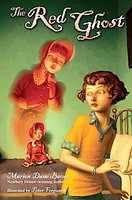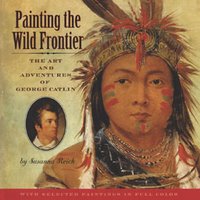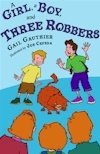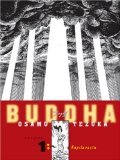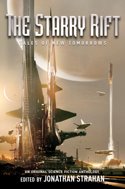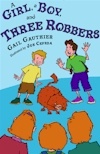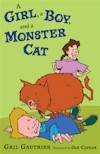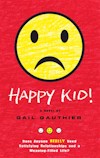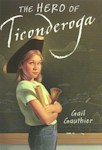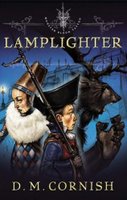 Lamplighter
Lamplighter by
D.M. Cornish is the second volume in his
Monster Blood Tattoo serial. And make no mistake, this is a
serial. Though the main character reaches the end of his journey in the first book,
The Foundling, it's clear that the book is not a completed story. The second book has a climactic event, but no resolution. Plus a lot of characters are introduced in
Lamplighter who don't do a great deal, which suggests to me that we'll be seeing them in the next book. Lady Dolours, for instance, is featured on the cover but plays virtually no role in this book. And, finally, the lengthy Explicarium/Glossary at the end of the book includes many entries referring readers back to Book One.
To enjoy these books, you need to accept the fact that this is a serial and not fight it. So go read the first book before you start this one.
Monster Blood Tattoo takes place in a world perhaps comparable to 17th/18th century Europe, though a 17th/18th century Europe overrun with monsters with whom humans are in constant conflict. A whole array of different types of human monster fighters exist, many of them having subjected themselves to surgical procedures that will give them inhuman powers. A human who has killed a monster gets tattooed with the monster's blood.
The Foundling was a journey story in which our main character, the orphan Rossamund, travels to Wintersmill where he is to train as a lamplighter, one of the people who light lamps along the highway late in the day and then put them out early in the morning. A journey story has a built-in narrative drive, you could say. Plus
The Foundling had a marvelous character in the monster fighter for hire, Europe, with whom Rossamund falls in.
Lamplighter is about identity. Rossamund is becoming a lamplighter. Is he also a monster lover and thus a criminal? Why is he so strong? Who is he? That's interesting, but not necessarily something that moves a story along. His lamplighter training is very military in nature and takes place in a military-type fortress. Military training doesn't have the built-in narrative drive of a journey story. What we get here is not very exciting training broken up with fantastic monster attacks. (From what I've heard, that's similar to real military life--unexciting preparation broken up by all-too-exciting engagements.) I mean,
really fantastic monster attacks. The last one was especially good, and I didn't see it coming.
The plot for the entire series does thicken in this volume. Someone within the military is creating monsters, though we don't know why. The bad guys appear to be...bureaucrats. Though we don't know, yet, what they have to gain.
The world of
Monster Blood Tattoo is very elaborate, with creatures and all kinds of invented job categories among the humans as well as an invented culture within which they live. I found the reading this time around a little more complex. I had to use the glossary quite frequently. I don't think I even knew there was one in the first book until I finished. The backflap says Cornish worked fifteen years creating Half-Continent in which the story takes place. I can believe it.
As I was reading the book, I couldn't help but think how difficult it must have been to edit. Part of an editor's job is to look for inconsistencies and to make sure the world the author has created--whether it's an elaborate new one as in
Monster Blood Tattoo or a grade school world we might know today--is believable. In addition to all the different types of monsters and monster fighters (some of whom are called different things within the military), this book uses invented countries, roads, weapons, holidays, days of the week and months of the year. Someone had to keep track of all that and make sure it made sense within the context of the book. I hope he wasn't trying to work on any other books at the same time.
One other interesting point about this book--the women. The world of
Monster Blood Tattoo seems to be male dominated. All but one of the lamplighters is a man. Women appear as nurses and cooks and innkeepers. And yet you also have these incredibly powerful women monster fighters.
Killers. The men in the story respect and fear them. Personally, I love women who kick ass, and the women who do so in this serial are a big draw for me.
While I can't say I was as big a fan of
Lamplighter as I was of
The Foundling, I did find myself missing the world within this book when I'd finished it. I suffered a little withdrawal.
By the way,
Lamplighter has been nominated for a
Cybil.
Labels: fantasy, Monster Blood Tattoo, Reader response, YA adventure stories
